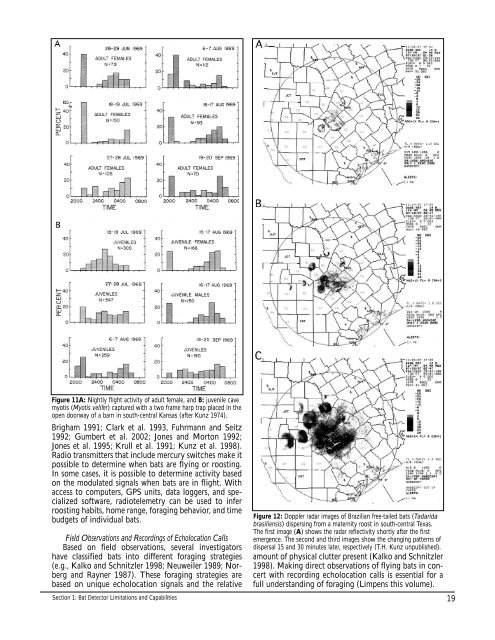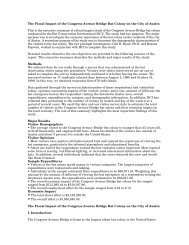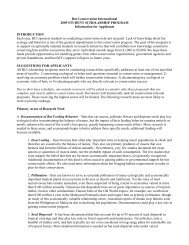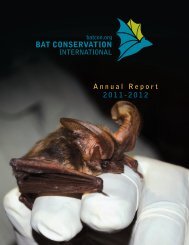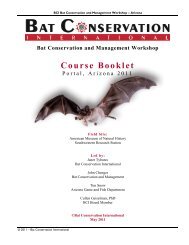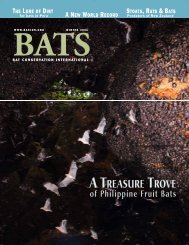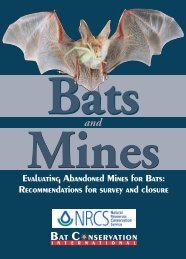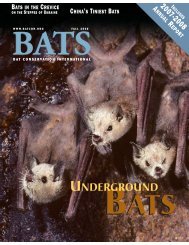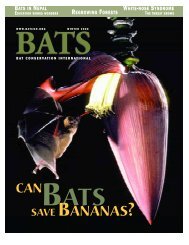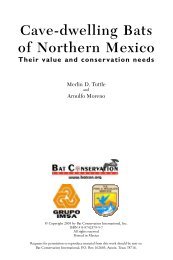Bat Echolocation Researc h - Bat Conservation International
Bat Echolocation Researc h - Bat Conservation International
Bat Echolocation Researc h - Bat Conservation International
You also want an ePaper? Increase the reach of your titles
YUMPU automatically turns print PDFs into web optimized ePapers that Google loves.
Figure 11A: Nightly flight activity of adult female, and B: juvenile cave<br />
myotis (Myotis velifer) captured with a two frame harp trap placed in the<br />
open doorway of a barn in south-central Kansas (after Kunz 1974).<br />
Brigham 1991; Clark et al. 1993, Fuhrmann and Seitz<br />
1992; Gumbert et al. 2002; Jones and Morton 1992;<br />
Jones et al. 1995; Krull et al. 1991; Kunz et al. 1998).<br />
Radio transmitters that include mercury switches make it<br />
possible to determine when bats are flying or roosting.<br />
In some cases, it is possible to determine activity based<br />
on the modulated signals when bats are in flight. With<br />
access to computers, GPS units, data loggers, and specialized<br />
software, radiotelemetry can be used to infer<br />
roosting habits, home range, foraging behavior, and time<br />
budgets of individual bats.<br />
Field Observations and Recordings of <strong>Echolocation</strong> Calls<br />
Based on field observations, several investigators<br />
have classified bats into different foraging strategies<br />
(e.g., Kalko and Schnitzler 1998; Neuweiler 1989; Norberg<br />
and Rayner 1987). These foraging strategies are<br />
based on unique echolocation signals and the relative<br />
Section 1: <strong>Bat</strong> Detector Limitations and Capabilities<br />
Figure 12: Doppler radar images of Brazilian free-tailed bats (Tadarida<br />
brasiliensis) dispersing from a maternity roost in south-central Texas.<br />
The first image (A) shows the radar reflectivity shortly after the first<br />
emergence. The second and third images show the changing patterns of<br />
dispersal 15 and 30 minutes later, respectively (T.H. Kunz unpublished).<br />
amount of physical clutter present (Kalko and Schnitzler<br />
1998). Making direct observations of flying bats in concert<br />
with recording echolocation calls is essential for a<br />
full understanding of foraging (Limpens this volume).<br />
19


